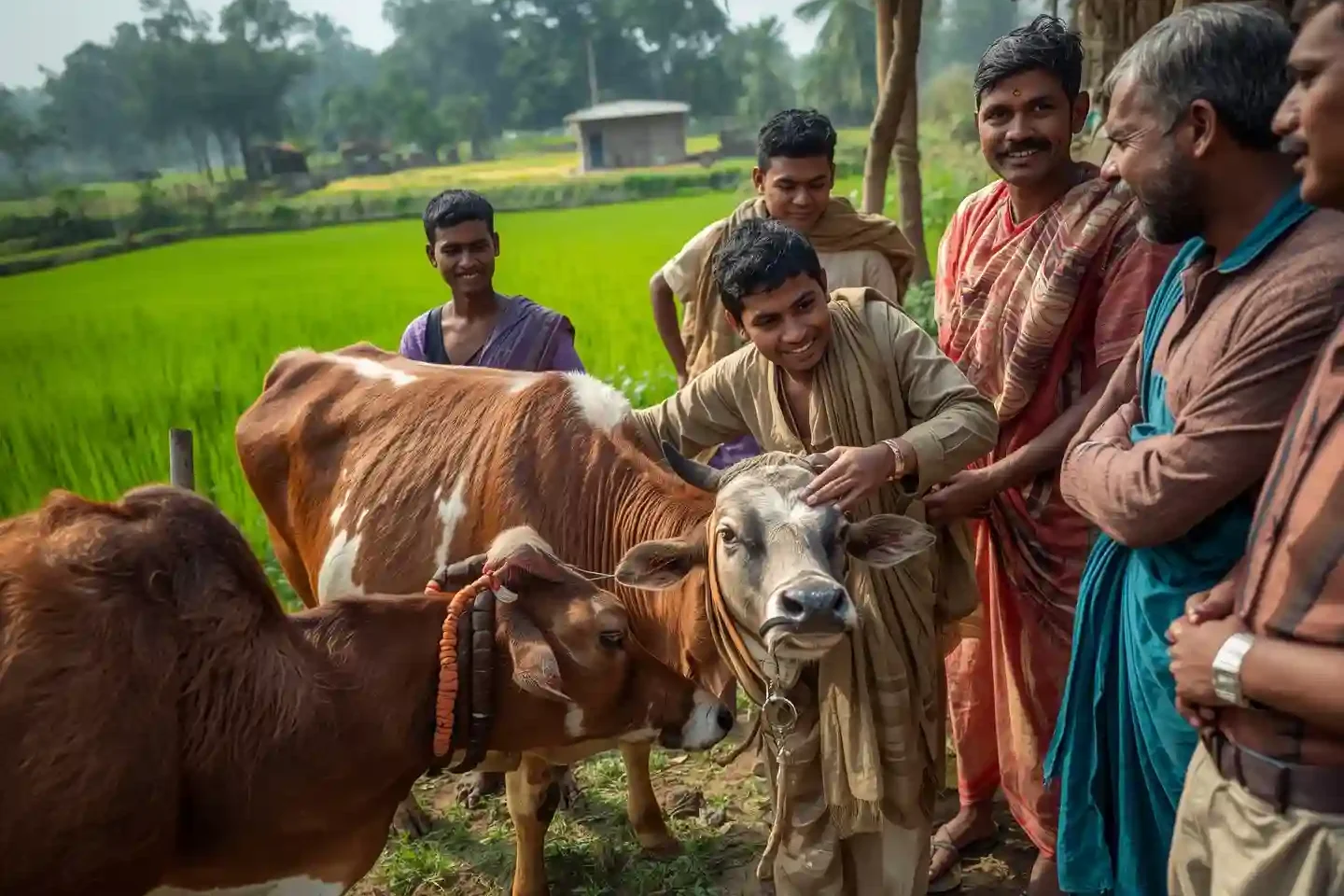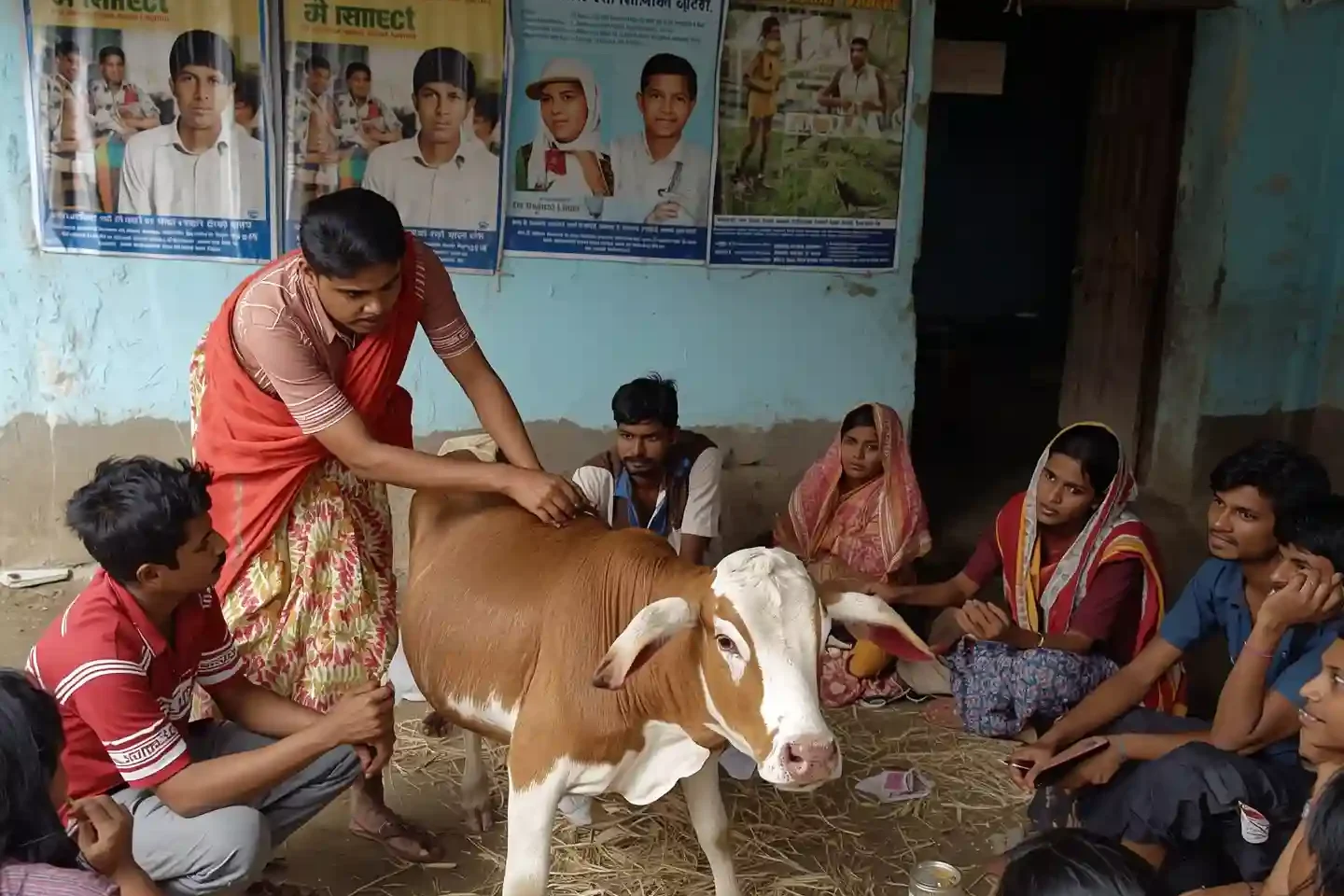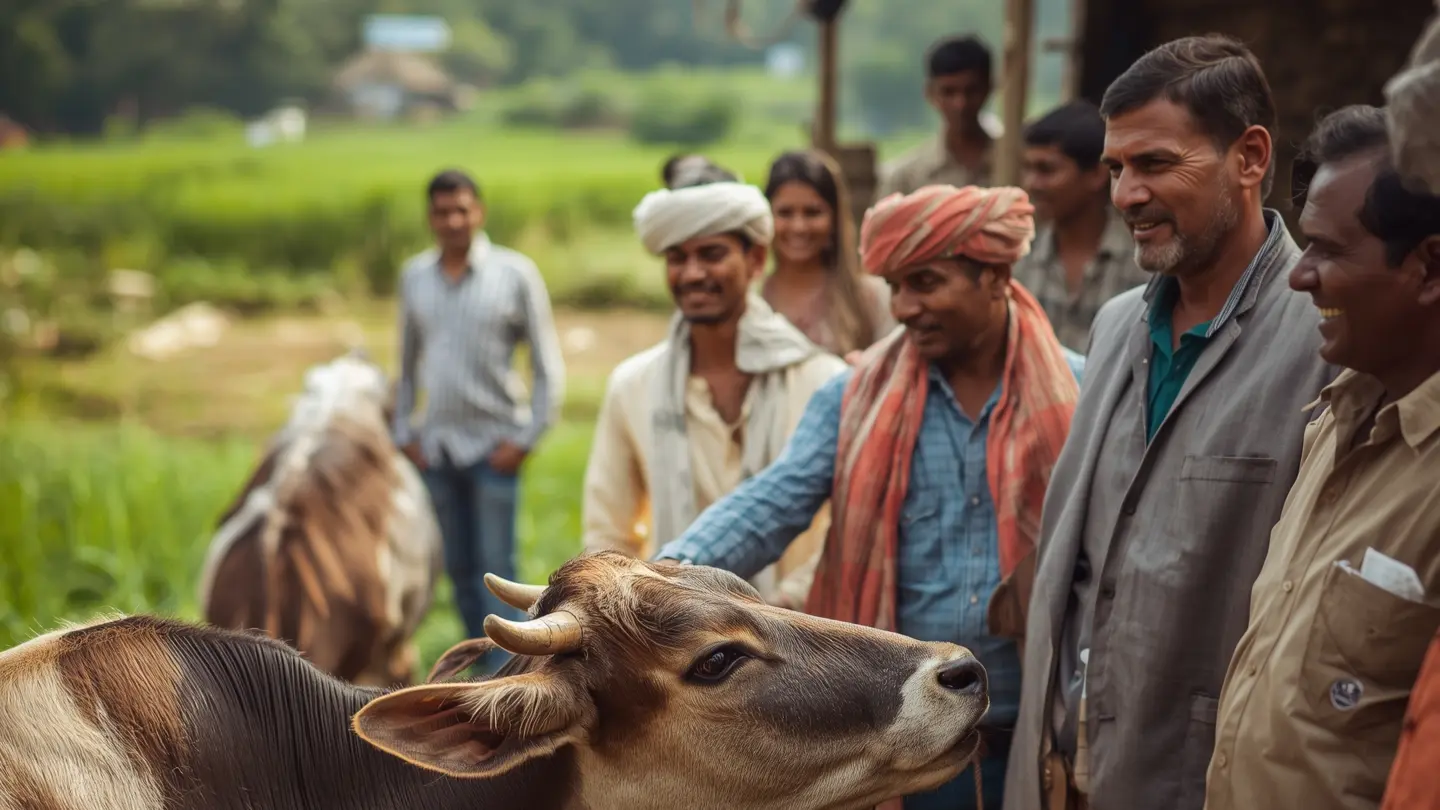Introduction
India’s rural economy has always been closely tied to agriculture and animal husbandry. Millions of families depend on livestock rearing for their livelihood, and any government initiative that strengthens this sector directly impacts both income levels and community development. Among such initiatives, the Pashudhan Mitra Scheme has emerged as a promising program, especially for the younger generation looking for meaningful work opportunities close to home. This scheme not only aims to boost livestock care but also provides sustainable earnings with flexible working hours, making it a unique opportunity in today’s rural landscape.
What is the Pashudhan Mitra Scheme?
Pashudhan Mitra Scheme is a government scheme of training of village youth as livestock assistant. In addition to establishing the creation of local small animal husbandry jobs and earning farmers a living via income from selling small animal products, as well as contributing to rural income, strengthening veterinary services and sustainable income support for farmers.

The scheme is essentially a government livestock scheme that creates employment at the grassroots level while simultaneously strengthening rural veterinary services.
Instead of struggling to find steady work in big cities, young people in villages now have the chance to earn through animal husbandry jobs without migrating. The scheme allows them to work part-time, sometimes as little as four hours a day, yet still bring home a respectable income. This makes it a game-changer for rural youth employment, as it combines social service, self-respect, and financial independence.
How to Apply for Pashudhan Mitra Scheme Online?
One of the most common questions from aspiring candidates is about the application process. To apply for the Pashudhan Mitra Scheme, interested youth must follow these steps:
- Eligibility check – Applicants should be residents of rural areas, preferably from families engaged in farming or livestock rearing. Most states require candidates to have at least completed Class 10th.
- Training program – Selected applicants will undergo short-term training in veterinary practices, livestock management, and basic medical care for animals.
- Online application – Many states are launching dedicated portals where youth can register. They must provide personal details, education proof, and sometimes a recommendation from the local panchayat.
- Approval and certification – After training, candidates receive certification and are officially recognized as “Pashudhan Mitras.”
- Work allocation – They are then connected with nearby farmers, veterinary hospitals, or livestock centers to begin work.
The application process is designed to be simple so that rural youth with limited access to technology can also benefit. Once registered, participants step into a network of animal husbandry jobs that give them stable earnings and a strong purpose.
What are the Benefits of Pashudhan Mitra Scheme for Youth?
The Pashudhan Mitra Scheme for rural youth helps them earn assured money and gets trained for animal care; by offering employment in the vicinity. It creates jobs, halts urbanization, and instills a sense of independence. Young people earn respect and support to farmers, enhance livestock health and contribute to rural development with dignified and sustainable livelihoods. Some of the major benefits include:
- Stable income with part-time work: With only four hours of daily service, youth can earn between ₹20,000 to ₹25,000 monthly in many states.
- Skill development: Training in veterinary and livestock management gives long-term career value.
- Local employment: No need to migrate to cities for unstable, low-paying jobs.
- Contribution to society: By helping farmers, Pashudhan Mitras improve animal health and indirectly increase milk, meat, and egg production.
- Recognition: Working under a government livestock scheme adds credibility and opens future employment opportunities.
Here’s a simple table showing the benefits of the Pashudhan Mitra Scheme for youth:
| Benefit | Details |
|---|---|
| Steady Income | Earn ₹20,000–₹25,000 per month by working only 4 hours daily. |
| Local Employment | Jobs created within villages, reducing migration to cities. |
| Skill Development | Training in livestock care, vaccination, and veterinary practices. |
| Community Respect | Recognition as certified livestock assistants helping farmers. |
| Farmers’ Support | Directly contribute to better livestock health and farmers’ income growth. |
| Self-Reliance | Encourages financial independence and sustainable rural livelihoods. |
These benefits clearly highlight why the scheme is becoming a vital tool for rural youth employment. It is not only about earning money but also about creating a sustainable ecosystem where youth and farmers grow together.
Who is Eligible for Pashudhan Mitra Scheme?
Eligibility plays a crucial role because the government wants genuine and dedicated individuals to take responsibility for animal care. The criteria generally include:
- Must be a resident of the village or rural area.
- Preferably from a family involved in farming or livestock activities.
- Minimum age requirement is usually 18 years.
- Educational qualification: At least Class 10th or equivalent.
- Willingness to undergo short-term veterinary training.
The government ensures that those who join the program not only need income but also genuinely wish to support livestock owners. This increases the success rate of the scheme and ensures better results for farmers income support.
How Much Income Can Be Earned Under Pashudhan Mitra Scheme?

Earnings under this scheme vary depending on the number of farmers a Pashudhan Mitra assists and the tasks performed.
On average, individuals are expected to earn around ₹20,000–₹25,000 per month by working just four hours a day. Some may even earn more if they extend services or cover multiple villages.
Here’s a simple table showing income details under the Pashudhan Mitra Scheme:
| Work Duration | Expected Monthly Income | Details |
|---|---|---|
| 4 hours daily | ₹20,000 – ₹25,000 | Part-time work with steady earnings in villages. |
| More than 4 hours | ₹25,000+ | Extra income possible by covering more farmers/villages. |
| Flexible work | Varies | Earnings depend on services provided and livestock cared. |
This flexible earning model makes it one of the most promising animal husbandry jobs available in rural areas today. Farmers are happy because they receive regular livestock care, and youth are satisfied because they earn a stable income without leaving their homes. It is a classic example of a farmers income support initiative that benefits both sides.
Is Pashudhan Mitra Scheme Available in All States of India?
Currently, the Pashudhan Mitra Scheme is being implemented in phases across different states. Some states have already started pilot projects, while others are preparing frameworks. The long-term goal is to expand this government livestock scheme nationwide so that every rural district benefits.
State governments play a crucial role in the rollout, as training centers, veterinary hospitals, and local panchayats are involved. Over time, as awareness spreads, it is expected that the scheme will be as common as other rural employment initiatives. For rural youth employment, such programs are essential in reducing migration and strengthening the village economy.
Why Pashudhan Mitra Scheme Matters for Rural India
India has one of the largest livestock populations in the world, but small farmers often face challenges such as lack of veterinary care, low productivity, and financial struggles. The Pashudhan Mitra Scheme addresses these gaps in multiple ways:
- Strengthening animal healthcare – Farmers get timely vaccinations and disease control for cattle, goats, sheep, and poultry.
- Increasing productivity – Healthy animals mean higher milk yield, better meat quality, and more eggs.
- Reducing farmer burden – Livestock becomes an asset rather than a liability.
- Generating employment – Youth get reliable animal husbandry jobs close to home.
- Boosting income – Both farmers and Pashudhan Mitras gain financially, ensuring stronger farmers income support.
By focusing on both farmers and unemployed youth, the scheme creates a balanced rural economy where resources are utilized efficiently.
Challenges in Implementing Pashudhan Mitra Scheme

Like any new program, the Pashudhan Mitra Scheme faces certain challenges:
- Awareness gap – Many farmers and youth are still unaware of this opportunity.
- Training limitations – Lack of infrastructure in remote areas may delay skill development.
- Financial constraints – Some states may face budget issues in providing regular stipends.
- Monitoring difficulties – Ensuring that Pashudhan Mitras perform their duties sincerely can be a challenge.
Despite these hurdles, the scheme’s foundation is strong. With better coordination and awareness campaigns, these issues can be resolved, and the program can reach its full potential as a government livestock scheme.
The Road Ahead: Future of Animal Husbandry Jobs in India
With rising demand for milk, eggs, and meat, livestock care is becoming more important than ever. Programs like the Pashudhan Mitra Scheme prepare India’s villages for this growing demand. In the future, such schemes will likely expand to include modern technology like mobile apps for livestock health monitoring, digital payments for services, and advanced veterinary tools.
Here’s a short table of challenges in the Pashudhan Mitra Scheme:
| Challenge | Details |
|---|---|
| Awareness Gap | Low knowledge among farmers & youth |
| Training Limitations | Few centers in remote areas |
| Financial Issues | Budget constraints in states |
| Monitoring Problems | Hard to track performance |
| Infrastructure Gaps | Lack of vet facilities in villages |
This opens up new dimensions of animal husbandry jobs, where rural youth not only work traditionally but also learn digital skills. Such progress ensures that rural youth employment becomes stable, innovative, and impactful.
Conclusion
The Pashudhan Mitra Scheme is more than just a job program—it is a holistic movement that combines livestock care, youth employment, and farmers’ welfare. By creating structured opportunities for animal husbandry jobs, it empowers the rural population and provides consistent farmers income support. With proper training, implementation, and awareness, this government livestock scheme has the potential to transform the rural economy and ensure a brighter, self-reliant future for India’s villages.
Further Readings:
- NSP Mukhya Mantri Vidyarthi Kalyan Yojna 2025: Powerful Benefits & Easy Application
- PM Viksit Bharat Rojgar Yojana 2025: Eligibility, Benefits & Quick Application
- Quick guide to PM SVANidhi Yojana 2025 — eligibility, loan slabs, and how to apply fast with Aadhaar.

